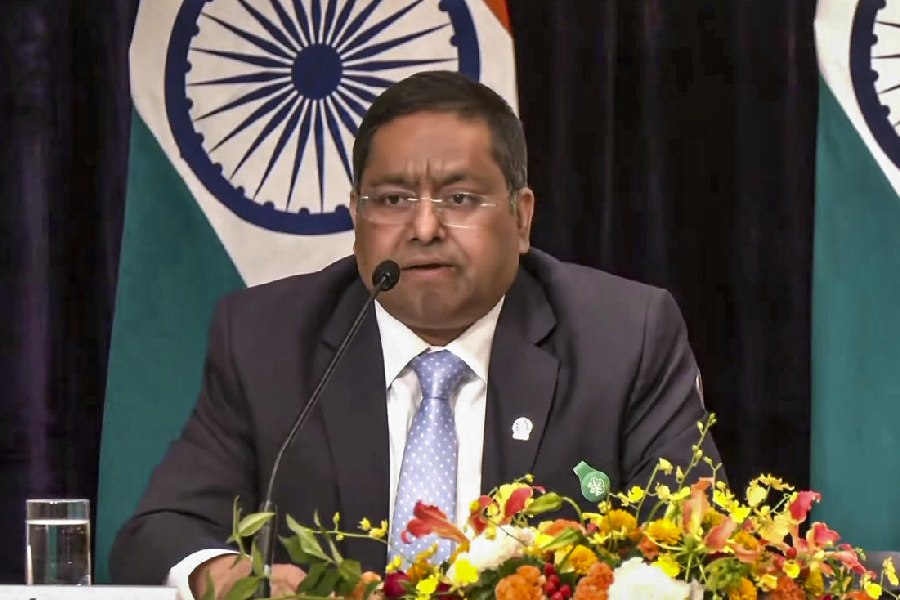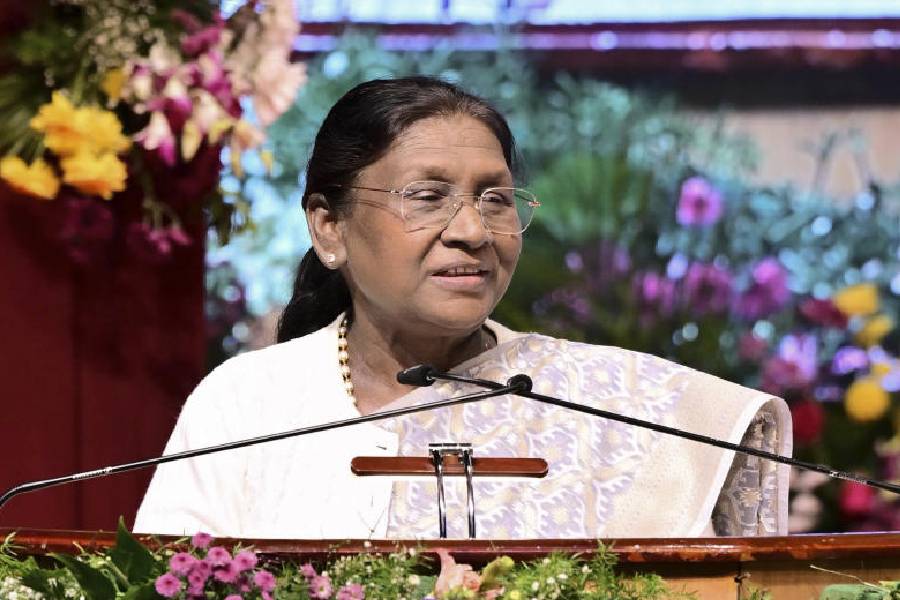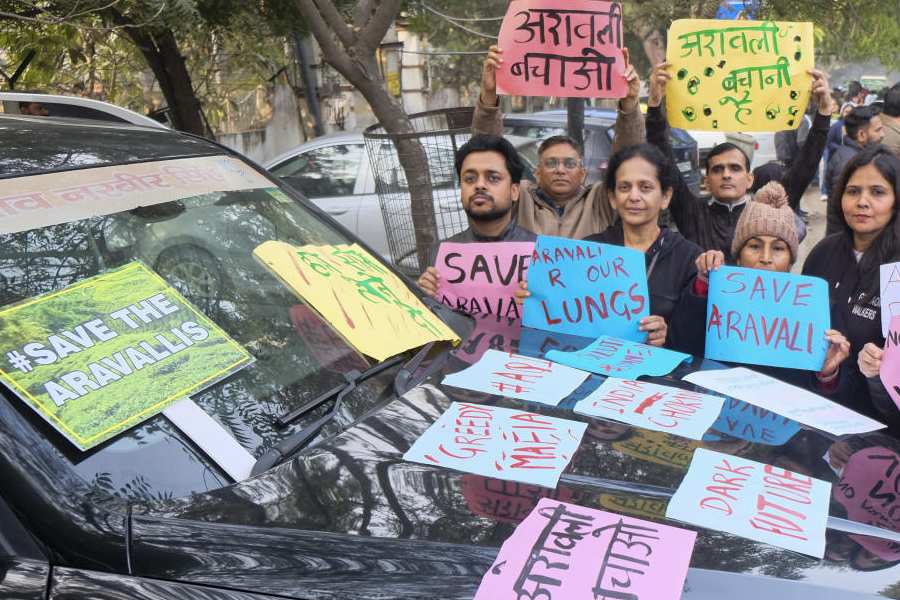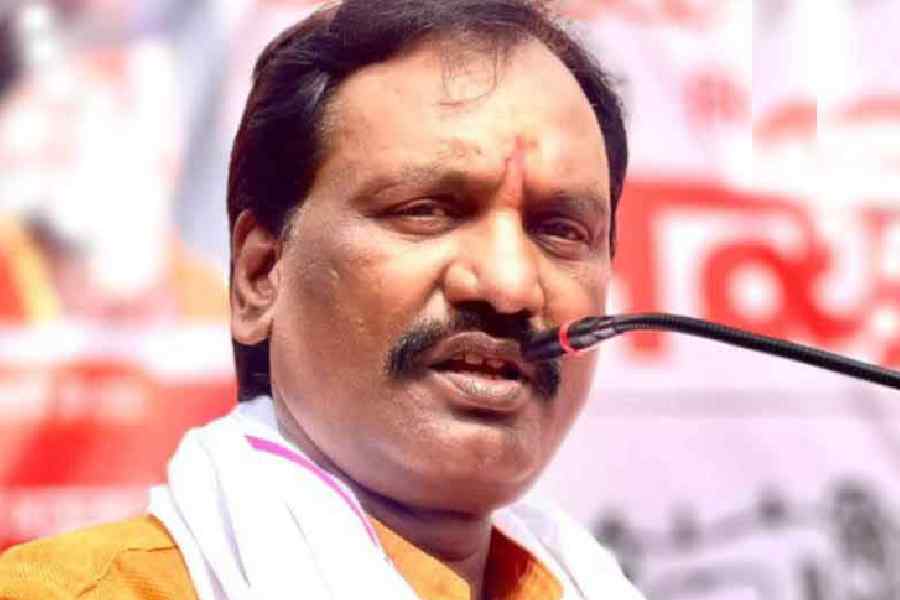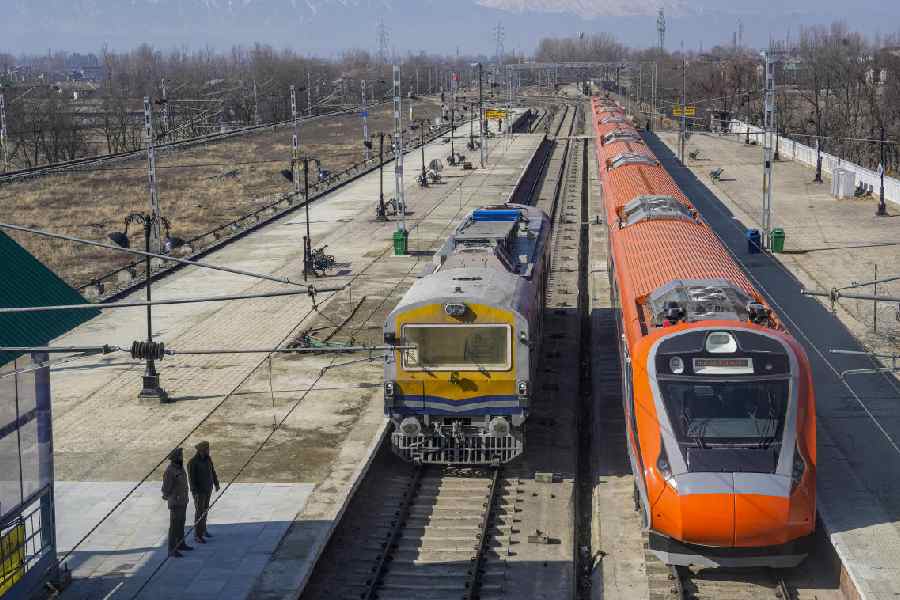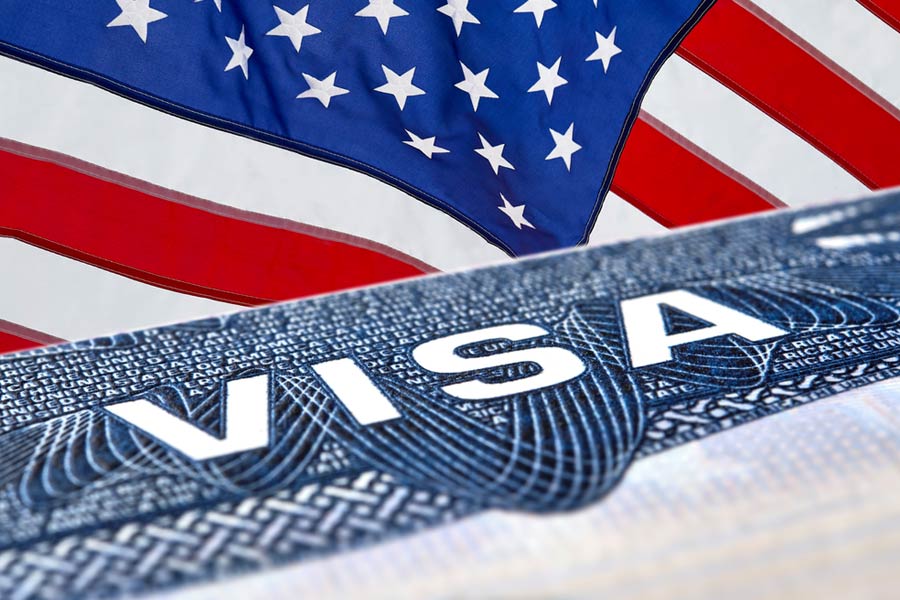 |
| Durga Puja mandap of the royal family of Jharia. Picture by Gautam Dey |
Dhanbad, Sept. 23: At a time when the Jharia Rehabilitation Development Authority (JRDA) and BCCL are working overtime to shift the fire-affected people of Jharia to safer places, descendants of the erstwhile Jharia royal family are busy trying to preserve their traditional Durga Puja, once regarded as one of the most grandiose in Bihar, Bengal and Jharkhand.
“Though the grandeur has waned over time, the devotion is intact,” said royal family member Sanjay Prasad Singh (50), a coal trader who also runs a school.
“The residents of Jharia still revere the Durga of Purana Rajagarh (old fort) and start viewing idols only after offering puja at our place and seeking the blessings of the royal goddess,” said Singh.
According to him, his forefathers migrated from Rewa in Madhya Pradesh and established their kingdom at an area near Dhanbad around 1763.
However, the Durga Puja started only around 1800 during the reign of Sangram Singh.
“I have heard family elders say that Sangram Singh wanted the ladies of the family, who were from central India, to see what the Durga Puja of Bengal was like,” said Singh, adding that priests from Bengal were called to perform puja at the palace.
Over the years, the puja became more opulent. As the revenue collection from the family’s coal business increased, so did the elaborate festivities.
The celebrations touched the zenith during the reign of Raja Shiva Prasad Singh (1916 to 1946) when the estate became one of the richest in Bihar.
“Even when I was a child in the 1960s I remember seeing a sea of humanity throng the streets of Jharia when the chariot of Kali Prasad Singh rolled put on ashtami, navami and vijaya dashami to offer puja at the old fort,” said Singh.
The puja was performed at three places — at the temple near the old fort, the temple at the new fort and at Shira Ghar, the place where the kuldevta and the weapons of the royal family are kept. Worshipping the royal weapons is still a part of the festivities.
“Though more than 100 goats were sacrificed on navami during the heydays, now 11 goats are sacrificed,” said Singh.
While Singh admitted that lack of funds has meant toning down the festivities, he insisted that the family was committed to keeping this tradition alive.


